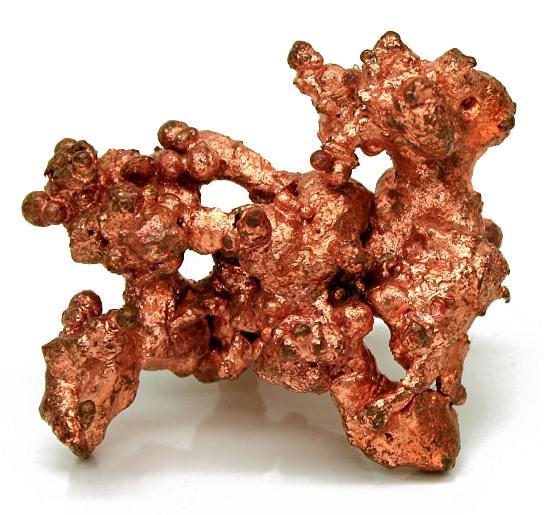Eventlist
Event

- Title:
- Open Seminar: Metal makes the world go around: Cypriot copper from the 3rd to 1st mil. BC
- When:
- 02.07.2015 19.00 h
- Where:
- Greek Centre Melbourne (Mezzanine) - Melbourne
- Category:
- Education
Description
Lecturer: Dr. Jennifer Webb
Entry: Free
Synopsis
Cyprus is today considered one of the richest countries in the world in copper per surface area. Massive copper sulphide deposits, mainly composed of pyrite and chalcopyrite, are located in the periphery of the Troodos mountain range in the geological formation known as the Pillow Lavas. After being formed on the ocean floor, the sulphide deposits were lifted to the surface by tectonic activity. Once exposed to the atmosphere, they were oxidised, producing colourful gossans. Thus they could be readily detected and easily reached with the use of inclined adits by ancient miners.
The use of metal became widespread on the island from the beginning of the Bronze Age, but direct evidence for the extraction of copper, in the form of a metallurgical workshop or even slag, dating to the earliest phase of this period has not yet been found. Both archaeological and textual evidence indicate that the copper industry was firmly established by the Middle Bronze Age, by which time Cypriot copper was exported to the Aegean and the Levant. It is in the Late Bronze Age, however, that the production and export of copper truly developed, reaching a climax in the 13th century BC. At every Late Bronze Age site that has been excavated, the remains of installations and waste products of the copper industry have been brought to light. Much, if not most, of the copper produced in this period was exported overseas in the form of 'oxhide' ingots. These are best illustrated in the cargo of the Uluburun ship, which dates to the end of the 14th century BC. This shipwreck also provides an example of the size of shipments that could be exported from Cyprus at any one time: the ship was carrying 354 oxhide ingots, totalling 10 tons of Cypriot copper.
In the Iron Age, when the established trading networks in the eastern Mediterranean collapsed, the Cypriots turned their interest to the central Mediterranean where they found a new market which demanded and consumed great amounts of copper. By the C9th BC Cyprus was once again the primary copper source for the eastern Mediterranean. It remained so for many years but it appears to have been the beginning of the issuing of coins made of copper alloys in the third century BC which made this natural resource of the island so important in the Roman period and especially in the Imperial era. Even at a time when Rome had under its control many other copper-producing areas, the mines of Cyprus were so renowned that Pliny assumed that Cyprus could have been nothing less than the place where copper was first discovered and Cypriot copper (aes Cyprium) became a term synonymous with the purest copper metal.
Bio
Dr Jennifer Webb is Adjunct Professor in the Faculty of the Humanities and Social Sciences at La Trobe University and a Senior Research Associate of the University of Cyprus. She is an internationally recognised expert on Bronze Age Cyprus and has co-directed a number of Australian excavation projects on the island. She has an extensive list of publications on Cypriot archaeology, including 20 books and over 100 papers. Dr Webb has also published collections of Cypriot antiquities in Australia and the UK.
She a Fellow of the Australian Academy of the Humanities and of the Society of Antiquaries of London and an Honorary Life Member of the Cypriot Community of Melbourne and Victoria. Since 2009, she has served, together with Professor David Frankel, as Editor-in-Chief of Studies in Mediterranean Archaeology. This series is a major publisher of volumes on Cypriot and Aegean archaeology and plays an important role in promoting the work of younger scholars in these fields.
Sponsors
During the course of the year considerable expenses are incurred in staging the seminars. In order to mitigate these costs individuals or organisations are invited to sponsor a lecture of their choice, please email: This e-mail address is being protected from spambots. You need JavaScript enabled to view it
This seminar has been sponsored by: Kypros Kyprianou.
You too can sponsor one or more seminars and (optionally) let your name or brand be known as a patron of culture to our members, visitors and followers, as well as the broader artistic and cultural community of Melbourne.
We also thank the seminars' corporate sponsors:
Venue
- Venue:
- Greek Centre Melbourne (Mezzanine) - Website
- Street:
- 168 Lonsdale Street
- Postcode:
- 3000
- Suburb:
- Melbourne
- State:
- VIC
- Country:
-

The Mezzanine floor (press "M" in the elevator) of Greek Centre Melbourne - located at the corner of Lonsdale and Russell streets in Melbourne, Australia.
EventList powered by schlu.net

